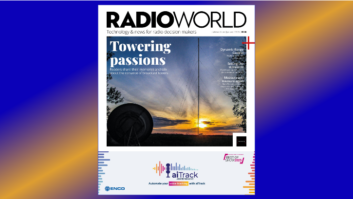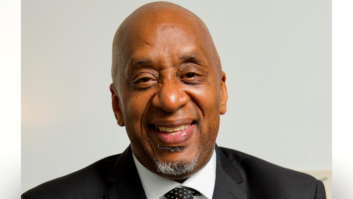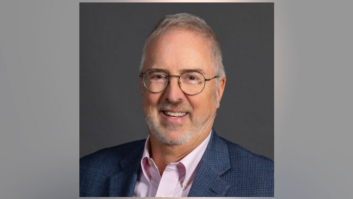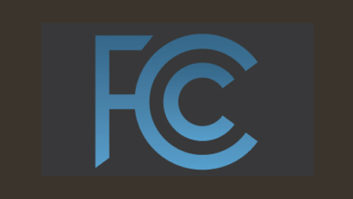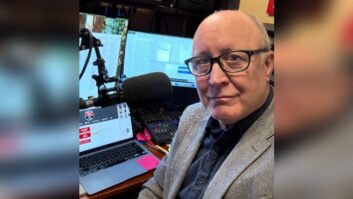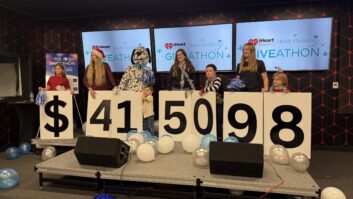How One Company in One Market Is Putting Radio Data to Work
DALLAS The five Clear Channel FM stations in this city are easy to spot on the radio dial – if you’ve got the right radio.
They’re the only ones scrolling song title and artist information, visible on RDS-equipped car receivers.
The Radio Data System has arrived in Big D, where the nation’s largest broadcaster began using the data and text delivery technology last November. So far listeners – especially those in young demos – appear excited to see song title and artist information along with station positioning statements and call letters fill the face of their car radio displays, according to Clear Channel officials.
Clear Channel has been at the forefront of what has turned into an RDS revival, implementing the technology on more than 200 of its stations so far. (Entercom, another group to commit heavily to RDS, has 66 FM stations running RDS Radio Text, according to Marty Hadfield, vice president of engineering.)
The data and text delivery service, which allows radio stations to incorporate inaudible signals into their broadcasts on the 57 kHz subcarrier, was introduced in this country in 1993 as a possible means of increasing revenues through non-traditional advertising. Most broadcasters agree that it failed to catch on at the time because of the limited number of RDS-capable car radios. They say today’s proliferation of digital audio storage systems makes it easier to stream data information.
Determining the exact number of vehicles on the road equipped with RDS-ready radios is difficult. One wireless data distribution firm estimates that RDS-enabled radios are standard equipment on more than 75 percent of new cars sold in the United States.
Listener calls
Clear Channel/Dallas Chief Engineer Louis Sutton said the five stations – KHKS(FM), KDMX(FM), KDGE(FM), KGEL(FM) and KZPS(FM) – scroll a combination of call letters, song title and artist data.
“The response has really been fantastic with our listeners. When we rolled it out we received a ton of calls, specifically on our CHR stations. I know it is eye candy for listeners in the car, but they seem to really get a kick out of it. Consumer interest seems very high here in Dallas,” Sutton said.
HD Radio proponents tout in-band, on-channel digital radio as having a range of advanced text-based data broadcasting capabilities, including traffic, weather and station promotions. And even though none of the Clear Channel/Dallas stations are broadcasting in HD Radio yet, Sutton says IBOC may open up more wireless data possibilities.
“We are planning for (HD Radio). I’m just not sure what the timetable is for the rollout in Dallas. Regardless, I know (Clear Channel) is not planning on selling RDS advertising of any kind. This is purely a service for the listeners,” Sutton said.
Clear Channel Senior Vice President of Engineering Jeff Littlejohn said the company is committed to not accepting advertising for RDS display, even though it has had inquiries.
“This technology is a listener benefit that is being integrated into our operations to increase listenership. Rather than monetizing this technology directly, we hope to increase listenership and eventually increase our ad rates,” Littlejohn said.
Sutton said the Clear Channel/Dallas transition to RDS last fall was seamless.
“The biggest trick was just configuring the little encoder boxes on our end to get it to properly scroll the data. We had to make sure we had the injection level right and make sure the subcarrier was strong enough that we don’t lose the data stream.”
The five stations use Prophet Systems Innovations NexGen digital audio control systems, which generate song and title information. That data is sent to Clear Channel’s corporate engineering offices in Covington, Ky., over the broadcaster’s wide-area network, Sutton said.
“Covington sees our song title and artist as they are being played. The data is stripped off and encoded and steered back to Dallas over the WAN,” Sutton said. “All of this happens within seconds.”
Harris Intraplex TDM-160s combine the RDS data with the audio, which is sent to the transmitters on a T-1 circuit. “There is a little bit of bandwidth in the T-1 line loops that is not used for audio … we take a sliver of that to get the data to the transmitter site,” Sutton said.
An edge
Because the stations share a transmitter site, data is sent over one Intraplex unit and then split out via a hub to each station’s RDS encoder box, which is identified by an IP address. The text data is then injected into the subcarrier input of our exciters at a 5 percent injection level, Sutton said.
Clear Channel/Dallas uses Audemat-Aztec FMB80 RDS generators at its transmitter sites to generate the RDS signal.
Once the RDS system is set up, Sutton said, you just make sure the data streams are working and it becomes a “set it and forget it” operation.
An indication of just how popular RDS content is among listeners in Dallas, Sutton said, is that all of the other broadcast groups in town want the system.
“Our programmers believe this gives us an edge in serving our listeners. We’ll take the edge for now, until everyone else catches up,” Sutton said.
Hot AC KDMX Program Director Pat McMahon said, “Initially, the reaction from listeners was ‘Wow, this is so cool.’ People seem to like it. The feedback has been all very positive.”
McMahon believes RDS gives his station an advantage over other stations in the market without data text capability.
“I think it’s a very good attribute to have. It makes us a little more visible. We tried to claim some ownership for it when it launched. I’ve been surprised by how many people notice it,” McMahon said.
